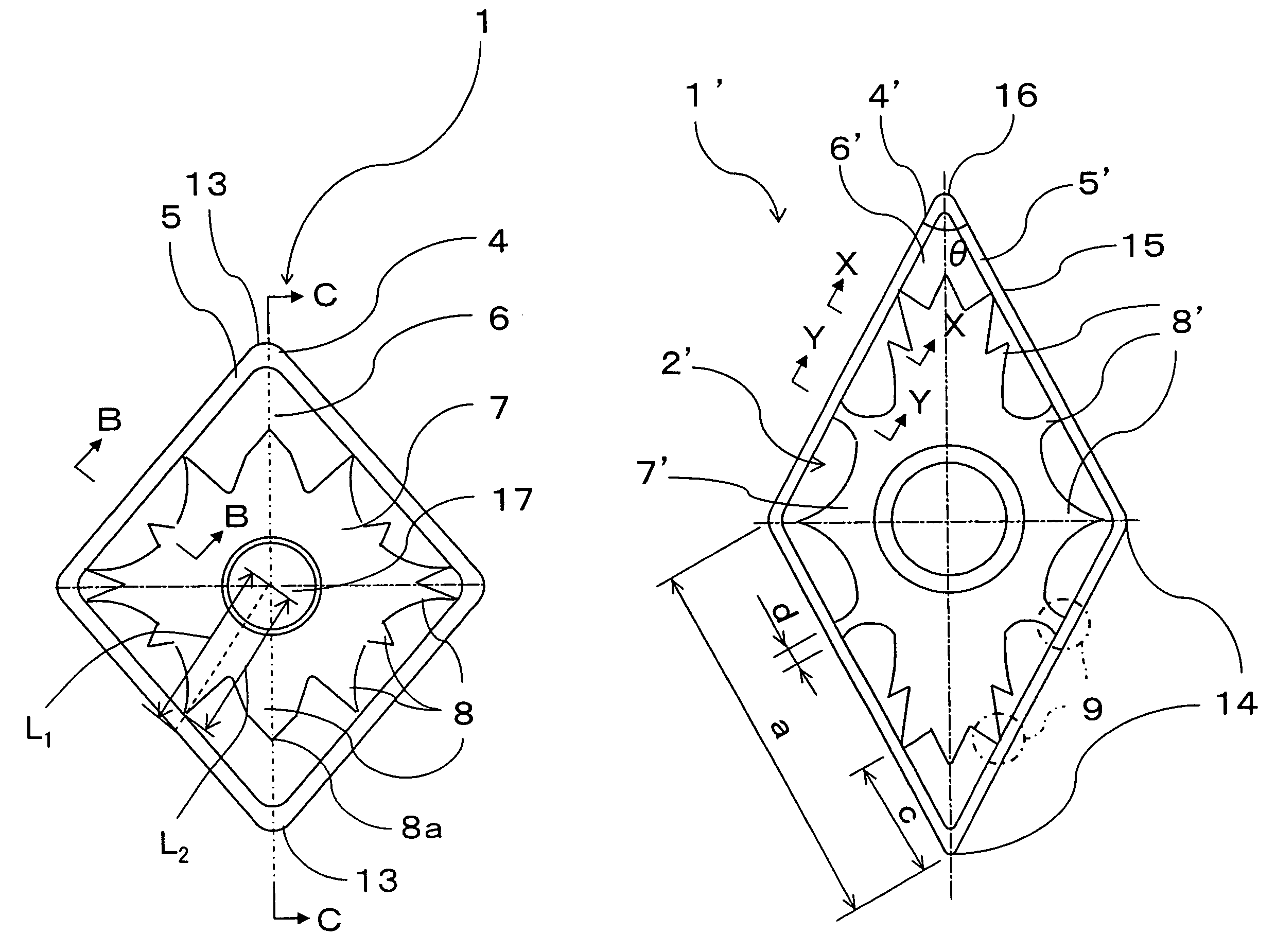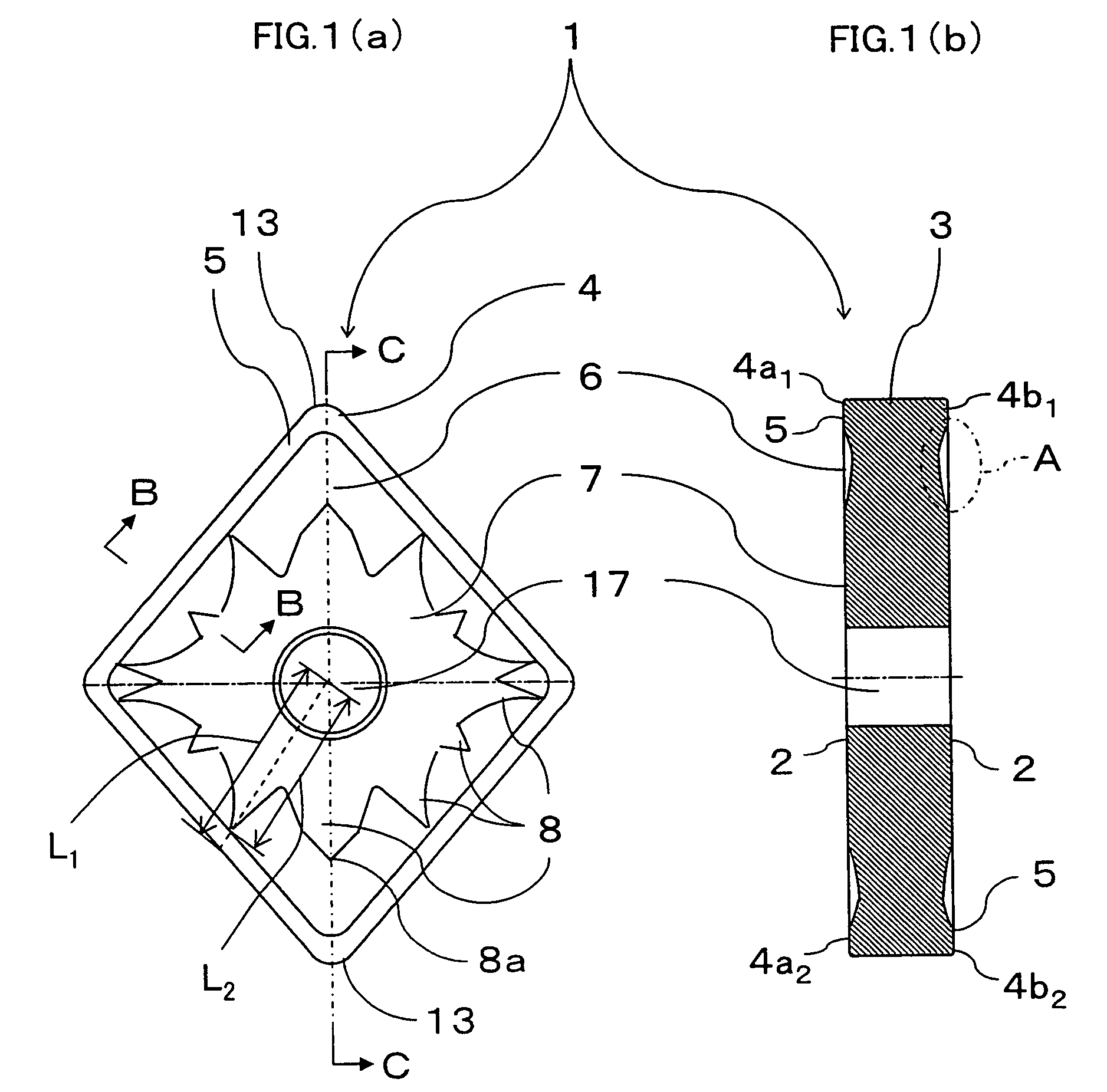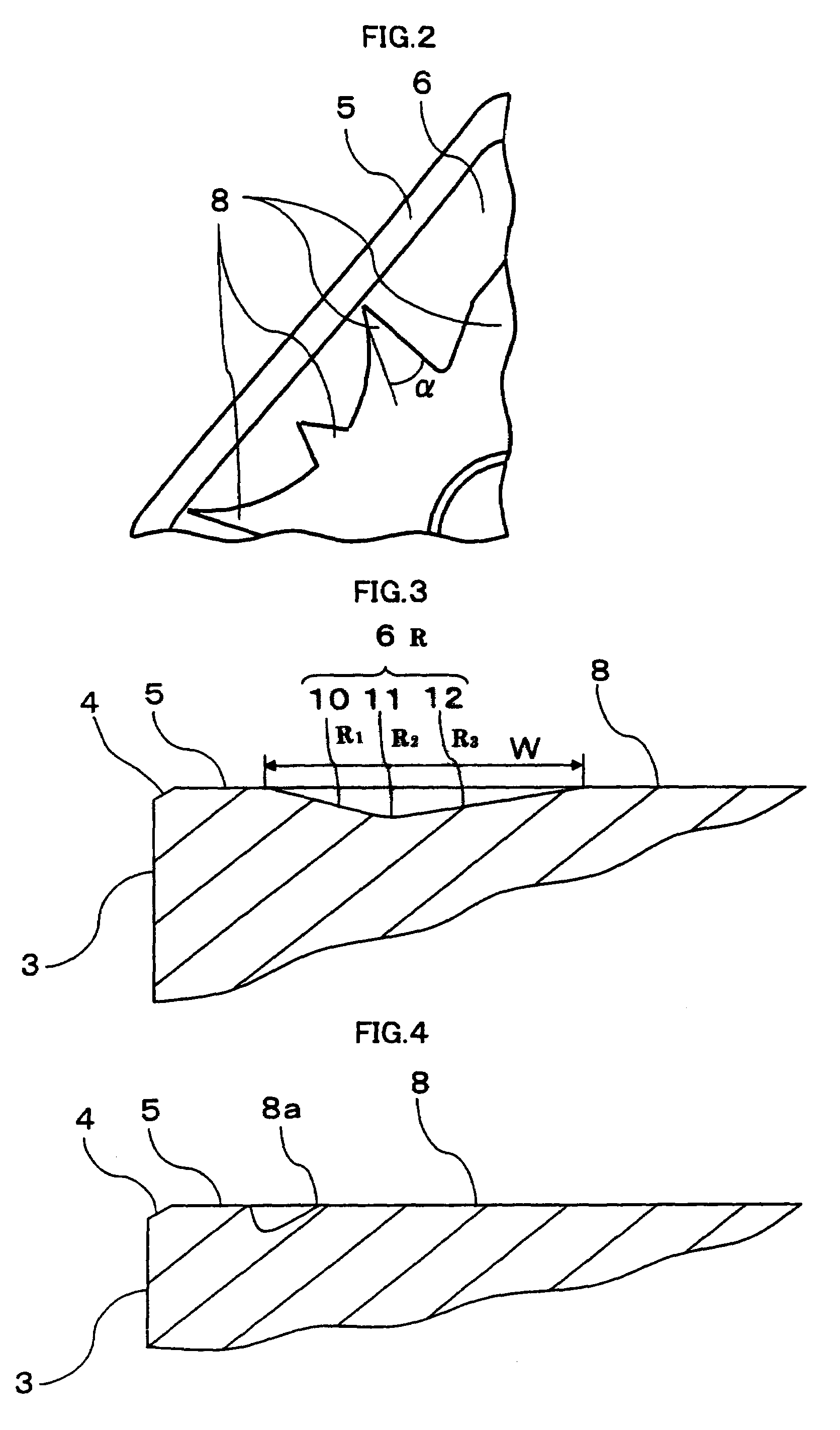Throw-away tip
- Summary
- Abstract
- Description
- Claims
- Application Information
AI Technical Summary
Benefits of technology
Problems solved by technology
Method used
Image
Examples
example i
[0075]A mixed powder prepared by adding 11% by weight of Co to WC powder was pressed to form green compacts of types and specifications shown in Table 1 each having two noses on each side, four noses in all. After being sintered in vacuum, samples I-1 through 6 were ground on the central surface and on the land surface of each principal surface to make the height of the central surface and the height of the land surface equal. In samples I-1 through 6 and 8 through 11, central surfaces were formed so as to protrude in symmetrical configurations at opposing corners, while forming a slope of 45° at the distal end setting the clearance (w) between the distal end of the projection of the central surface and the land surface to 0.2 mm, so that variation in the parallelism during the grinding process could be monitored visually.
[0076]Sample No. I-7 was formed in the conventional shape without chip breaker, samples No. I-8, 9 were formed in the conventional shape where the land surface is ...
example ii
[0087]A mixed powder prepared by adding 11% by weight of Co to WC powder was pressed to form green compacts that would make sintering of the shapes and dimensions shown in FIGS. 5, 7 and Table 3. After being sintered in vacuum, samples II-1 through 4 were ground on the central surface and on the land surface of each principal surface so as to make the height of the central surface and the height of the land surface equal. Samples II-1 through 8 were formed in diamond shape having nose angle θ of 55° with a linkage portion formed (FIG. 5). Sample No. II-5 was formed in the conventional shape without chip breaker as shown in FIG. 7(a), sample No.II-6 was formed in such a shape that has full-circumference chip breaker while the land surface has the same height as the central surface, without protrusion as shown in FIG. 7(b), and samples No. II-7, 8 were formed in a shape without linkage portion as shown in FIG. 7(c).
[0088]All samples were processed on the periphery of the land surface ...
example iii
(Example III-1)
[0096]A mixed powder prepared by adding 11% by weight of Co to WC powder was pressed to form green compacts of types and dimensions shown in Table 5 having such a pattern as shown in FIG. 8. After being sintered in vacuum, the central surface and the land surface were ground (double-head grinding) on each principal surface to make the height as shown in Table 1 (samples Nos. III-1 through 10).
[0097]When grinding the throw-away tips, the protrusions 8A located at the corners 13″ were formed at a distance (w) of 0.2 mm from the protrusion 8A to the land surface in such a shape as to form a downward slope of 45° from the protrusion 8A to the land surface, while setting the clearance (w) between the distal end of the projection and the land surface being monitored visually when grinding the surface, thereby making it possible to achieve machining with high accuracy easily. The samples were processed on the periphery of the land surface to provide honed edge using a brush,...
PUM
| Property | Measurement | Unit |
|---|---|---|
| Length | aaaaa | aaaaa |
| Fraction | aaaaa | aaaaa |
| Angle | aaaaa | aaaaa |
Abstract
Description
Claims
Application Information
 Login to View More
Login to View More - R&D
- Intellectual Property
- Life Sciences
- Materials
- Tech Scout
- Unparalleled Data Quality
- Higher Quality Content
- 60% Fewer Hallucinations
Browse by: Latest US Patents, China's latest patents, Technical Efficacy Thesaurus, Application Domain, Technology Topic, Popular Technical Reports.
© 2025 PatSnap. All rights reserved.Legal|Privacy policy|Modern Slavery Act Transparency Statement|Sitemap|About US| Contact US: help@patsnap.com



